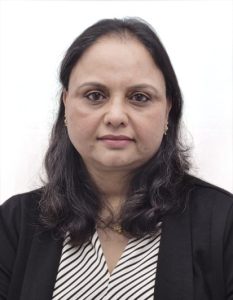Here is an interview with Uma Pendyala on Women in Cybersecurity.
On International Women in Cyber Day (September 1), we celebrate women leaders who have challenged stereotypes and shaped the cybersecurity industry.
One such leader is Uma Pendyala, Head of Business Operations and Director at SecurEyes, who has been part of the company since 2009.
With nearly two decades of experience across operations, finance, HR, and cybersecurity, Uma’s journey is a testament to resilience, adaptability, and inclusive leadership.
In this interview, she reflects on her professional path, challenges, and her vision for the future of women in cybersecurity. Here is our conversation with Uma Pendyala.
Table of Contents
Interview With Uma Pendyala, Head of Business Operations and Director at SecurEyes
Q1:How did you enter cybersecurity, and how has your journey evolved in the past 18 years?
My journey in cybersecurity has been close to 18 years now. Interestingly, it wasn’t a conscious decision to enter this space. I came in through the non-technical route, initially managing HR, operations, and finance for a cybersecurity organisation. Over time, I realised how deeply cybersecurity impacts not just systems and data, but also business continuity, cyber resilience and customer trust and reputation.
Back then, cybersecurity in India was just beginning to take shape—built not on frameworks and protocols alone, but on the dedication of early believers who saw its potential to transform how we live and work. I entered the field through a non-traditional path, and over time, transitioned into strategic roles where I focused on aligning cybersecurity with core business objectives. What began as operational support evolved into a mission to position cybersecurity not just as a safeguard, but as a driver of enterprise value and long-term resilience. Today, as one of the directors at SecurEyes, I manage global expansion, oversee key customer accounts, and focus on ensuring that security solutions are always tied back to core business objectives.
Cybersecurity has transformed from a back-end concern to a boardroom priority—anchored in trust, strategy, and resilience. That understanding has shaped my leadership journey.
Q2: Cybersecurity is male-dominated. What challenges did you face as a woman leader?
The biggest challenge was constantly proving that leadership in cybersecurity doesn’t need to be restricted to engineers or purely technical experts. Strategic leadership is equally important, and that’s where I had to demonstrate that strategic insight and business acumen are just as critical as technical depth in leading cybersecurity initiatives.
Initially, there was scepticism about a non-technical leader’s role in such a technical space. But over the years, the very challenge became a success story. By building high-performing teams, expanding into new markets, and earning continued customer trust, I demonstrated that leadership in cybersecurity is about far more than coding or engineering—it’s about vision, trust, and strategy.
Even today, the representation of women in cybersecurity remains very skewed with just about 20% women among the total cybersecurity workforce in India. But I believe this challenge also presents an opportunity for more women to step in and make their mark.
Q3: Why is diversity, especially women’s representation, important in cybersecurity?
Diversity is not just about gender—it’s about bringing multiple perspectives to the table. Whether it’s gender, nationality, ethnicity, or even professional backgrounds, diversity enables organisations to approach problems from different angles and arrive at more holistic solutions.
For women specifically, organisations need to build inclusive cultures where opportunities are equal and performance-based, not gender-based. At SecurEyes, we have actively recruited women returning to the workforce after career breaks. We’ve also offered flexible working models—even before the pandemic—to ensure talented women aren’t forced out because of rigid structures.
Skill development is equally critical. It’s not enough to hire women; organisations must also invest in upskilling and training so that diverse talent can thrive. Inclusion has to be both structural and cultural.
Q4: How do you align cybersecurity with business goals?
I strongly believe that the ultimate goal of cybersecurity is not just technical robustness but business impact. At the end of the day, customers want outcomes—they want more revenue, happier customers, and better user experiences. Technology is only a means to that end.
Having both technical and non-technical expertise has given me a more holistic view. I am a CISA certified and an ISO 27001 lead auditor, so I understand the technical aspects of cybersecurity as well. But my background in HR, finance and operations ensures I can translate technical solutions into business outcomes.
Operational excellence plays a huge role here. Cross-functional leadership, stakeholder management, and empathy are critical in ensuring that cybersecurity isn’t seen as a roadblock but as a driver of growth and resilience.
Q5: What trends will shape the future of cybersecurity?
The future of cybersecurity is being shaped by three major forces: Cloud Security, AI-Powered Threats, Quantum Risks, and Increased Regulatory Compliance.
Cloud adoption has become almost universal. Even organisations with mission-critical data are shifting to private clouds. With this shift comes a new focus on third-party and supply chain risks.
AI and machine learning are already being used for anomaly detection and predictive intelligence. While they empower cybersecurity professionals, adversaries are also using them—so AI security is becoming paramount.
As quantum advances accelerate, preparing with post-quantum cryptography is no longer optional—it’s a strategic imperative.
Finally, regulation is expanding rapidly. Post-pandemic, as technology use has exploded, governments and industry bodies are introducing stricter compliance requirements. This has created new opportunities in governance, risk, and compliance (GRC).
For women, this is a fantastic moment. Whether you’re on the technical side—working in AI and cloud security—or on the governance and compliance side, there are immense opportunities. Given that women currently represent only around 20% of the workforce, the demand for inclusion is higher than ever.
Q6: What advice do you give young women aspiring to join cybersecurity?
First, don’t be intimidated by the perception that cybersecurity is “too technical” or “too male-dominated.” There’s a place for every skill set—technical, operational, strategic, and managerial.
Second, invest in continuous learning. Certifications, courses, and hands-on training are invaluable. Even if you come from a non-tech background like I did, upskilling can help you transition successfully.
Third, leverage your natural strengths—empathy, collaboration, communication, and resilience. These are not “soft skills”; they are essential leadership skills.
Finally, don’t give up easily. Women often approach challenges by asking, “How can this be done?” instead of “Why can’t this be done?” That mindset will give you a competitive edge in cybersecurity and beyond.
Q7: What principles guide your leadership style?
My leadership philosophy rests on three pillars: empathy, collaboration, and trust.
I believe women leaders naturally bring empathy and inclusivity into strategy. I focus on building open relationships with clients and teams, where dialogue is encouraged, and solutions are co-created.
I also strongly believe in aligning leadership with growth and resilience. Every new market we enter, every solution we design, must contribute not just to security but to business impact.
Lastly, I ensure that opportunities within my organisation are equal and skill-based. By fostering diversity and flexibility, we not only build stronger teams but also inspire the next generation of women in cybersecurity.
On this International Women in Cyber Day, Uma Pendyala’s journey is a reminder that cybersecurity leadership is not limited to coding or engineering. It is about trust, vision, strategy, and inclusivity. By blending technical expertise with operational excellence and empathy, Uma has carved a path that others can follow.
As the industry evolves with AI, cloud, and regulatory shifts, there has never been a better time for women to step into cybersecurity. The doors are open—the challenge now is to walk through them with confidence.
Thank you Uma Pendyala for this interview!
INTERESTING POSTS
About the Author:
Meet Angela Daniel, an esteemed cybersecurity expert and the Associate Editor at SecureBlitz. With a profound understanding of the digital security landscape, Angela is dedicated to sharing her wealth of knowledge with readers. Her insightful articles delve into the intricacies of cybersecurity, offering a beacon of understanding in the ever-evolving realm of online safety.
Angela's expertise is grounded in a passion for staying at the forefront of emerging threats and protective measures. Her commitment to empowering individuals and organizations with the tools and insights to safeguard their digital presence is unwavering.







